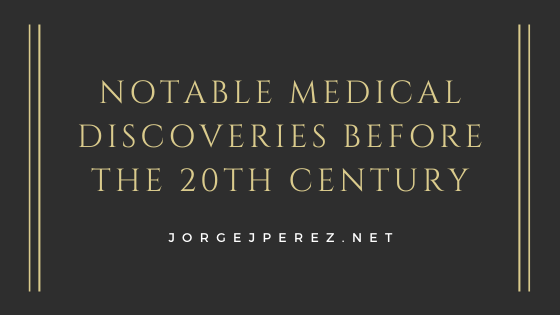Medicine has not always been as precise and scientific as it is today. Still, throughout the ages, professionals in the health field have made countless discoveries and conceived innumerable inventions that have not only changed the course of history but also improved the general understanding of health, medicine, and the human body.
In some cases, medical discoveries and practices of the past were not entirely accurate when it came to practitioners’ beliefs and ideology. Even so, because of historical discoveries and the developmental journey the medical field has undertaken, medicine has evolved significantly in the modern era, allowing for better treatment, stronger ethics, and greater accessibility.
Preventative Health Care and the Invention of the Vaccine
In the late 1700s, a British doctor by the name of Edward Jenner noticed that milkmaids who contracted cowpox were not affected by the much deadlier smallpox. Cowpox, while its symptoms were very similar to those of smallpox, was never fatal, and the symptoms were significantly less severe. He considered that perhaps those who contracted cowpox were effectively immune to smallpox, and in an effort to test this theory, he invented the vaccine.
His procedure was rather rudimentary compared to modern science, but ultimately, he was proven correct. Jenner, after obtaining permission, injected pus drained from a milkmaid’s sores into the arm of a farmer’s son. Then, after this had been completed, Jenner also injected the boy with pus from a smallpox sore.
While the boy did become ill for a short period of time, he did not actually contract smallpox and was well again within a week. Vaccine therapy and the practice of immunology were born in tandem with this procedure. Since Jenner’s discovery, vaccines have been developed and used to prevent illnesses from measles and meningitis to rubella and rabies. Vaccines have effectively saved millions of lives since their inception, and when it comes to smallpox, the vaccine Jenner developed proved instrumental in the prevention of the disease until 1980 when the World Health Organization declared that smallpox had been eradicated.
Germ Theory
Initially proposed in the 16th century, germ theory was not put into widespread practice until the 1860s when Sir Joseph Lister began applying it to medicine. Put simply, germ theory refers to the understanding that pathogens can be transmitted through skin-to-skin contact as well as the idea that some pathogens are airborne and can spread that way. Previously, the prominent idea pertaining to contagions was that of “spontaneous generation” in which physicians were convinced that germs could appear out of nowhere.
In practice, germ theory helped improve sanitation conditions and diminish the spread of contagious diseases. Lister connected the high rates of “ward fever,” which referenced a large number of patient deaths and infections that were seemingly unrelated to the procedures they underwent.
Prior to Lister’s discovery, it was the norm for physicians to proceed from patient to patient with bloodstained gowns, unwashed hands, and limited disposal of tools. He integrated a number of practices into his routine; Lister sprayed down rooms and equipment with the disinfectant known as carbolic acid, thoroughly washed his hands between patient visits, and regularly changed his gown and gloves. Though other physicians dismissed these efforts at first, Lister’s practices resulted in a significant decrease of infections and patient deaths.
Thanks to germ theory, sanitation practices improved, and because of Lister’s efforts to acknowledge germ theory in his practice, such practices are enforced in medical facilities today.
Medical Imaging with X-Rays
Near the start of the 1900s, German physicist Wilhelm Conrad Rӧntgen unintentionally invented the X-ray during his experimentation of sending electrical currents through glass tubes. As a result, this discovery changed the medical field forever, allowing doctors to better understand the inner workings of the human body in a non-invasive way. Within a year, the world’s first radiology department opened its doors in Glasgow hospital. Other medical imaging techniques such as ultrasound and magnetic resonance imaging were integrated into the medical field during the 1900s, but X-rays are still used today.
Because of the continual drive for improvement and advancement in the medical industry, medicine has evolved into a more precise, effective, and preventative practice. From the advent of the vaccine which has saved millions of lives each year to the integration of advanced medical imaging technology that allows doctors to more accurately assess the internal conditions of their patients, the medical field has repeatedly revealed the limitless potential of human innovation and experimentation.
While there are still many unknowns in the medical field as it relates to cures for diseases, origins for infections, and optimal treatment options for certain conditions, history suggests that with perseverance, education, and experimentation, professionals in the medical and scientific communities will be able to learn more about the human body and that which plagues it.

